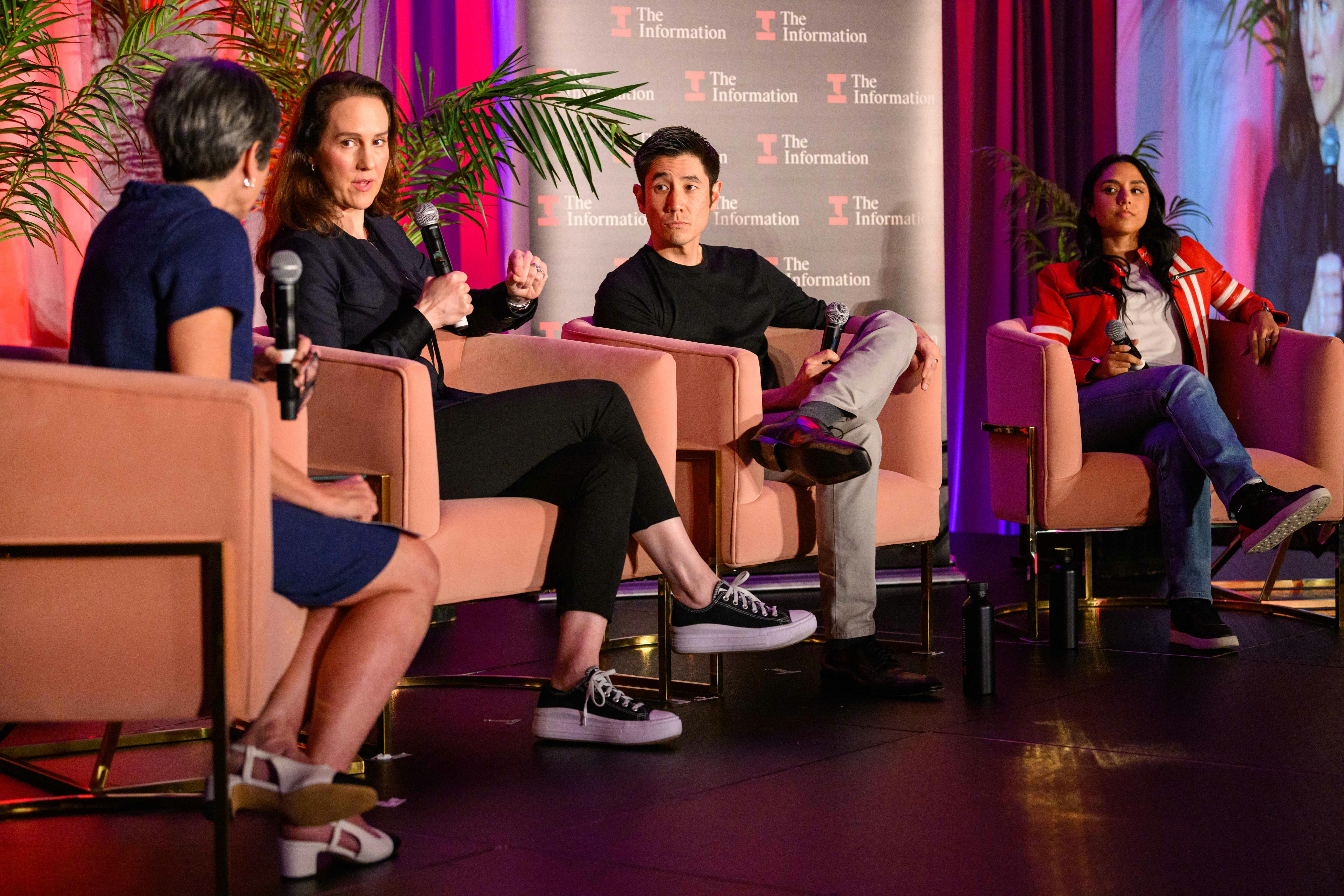Recap: The Creator Entrepreneur 2.0

As the market for creators continues to grow, it’s not all about creating engaging videos. As their channels get bigger, creators have become entrepreneurs. So what’s the best way for creators to successfully expand a small business into a larger one—and find new sources of revenue? What technologies exist to help them? And how have large brands jumped at the chance to reach these new audiences?
Laura Mandaro, reporter for The Information, sat down with an advertiser, a platform director and a creator to see what 2024 holds for this evolving space:
- Ashley Cole, global head of content, Visa
- Thomas Kim, director of product management, creator monetization, YouTube
- Michelle Khare, creator of “Challenge Accepted!”
Building Trust With Brands
Laura Mandaro opened up the conversation by asking Ashley Cole of Visa how brands like hers are working with creators. “Our creator partnerships have grown a lot,” Cole said. “Creators know the platforms better than we do, so that’s why we partner so directly with them.”
And how has Visa changed how they’re using their advertising spends? “Are we still doing TV and audio? Of course,” said Cole. “But social has evolved a lot. It used to be, like, ‘I’m gonna make a piece of content, give it to the platform and pay to reach people.’ Now it’s far different in that we’re working with creators on reaching those audiences.”
The Long and Short of It
Mandaro then asked Thomas Kim about the YouTube Partner Program, which launched last year and focuses on giving creators more ways to make money. Mandaro congratulated Kim on the program’s success, and asked him how it impacts Shorts and long-form creators.
“If you’re choosing to focus on Shorts, there’s a valuable path for you,” Kim said. “We allow creators to have creative choice, to try different formats, with multiple ways to earn. It goes to the heart of the program.…We have a partnership and a shared commitment. YouTube succeeds when creators succeed.”
Michelle Khare’s focus is on long-form storytelling, and she’s thankful to be able to make a living out of it. “At the end of the day, I’m really happy to be somewhere where we get residuals. Less than a year ago, unions were striking in traditional Hollywood to fight for that.”
Kim highlighted two new features of the Partner Program that help creators realize more revenue on livestreams and long-form videos: Super Chat and Super Thanks, both of which allow fans to essentially tip their favorite YouTubers in fun ways.
Going From Creator to CEO
When Mandaro asked Khare what tools she thinks are missing for creators, she responded that it wasn’t really tools that were missing but critical business skills. “There’s a lot of education out there on how to become a creator. But when you get to a certain size, you become a small business manager. And those aren’t skills I signed up for when I became a YouTuber. But those skills are necessary because this is an entrepreneurial endeavor. And you need to operate as such.”
Khare was excited to expand her skills. “It’s been a huge learning curve for me that I wasn’t anticipating, but it’s been so awesome for me to step into those shoes of leadership, especially as a woman and CEO of my own company. To have the reach that we have has been such a privilege.”
Attract Brands by Focusing on Your Passions
What’s the best advice for creators who want to partner with brands? Keep doing what you’re doing, according to Cole. “The more creators do what they love, the more that content is effective for their audiences, the better for brands,” she said. “So that’s my advice: Keep doing what you love, do it as effectively as possible on each platform, and the brands will come to you.”
The Future Belongs to Creators
As more people jump into becoming creators (aided by tools like artificial intelligence, which can analyze data on a channel and inspire new topics to explore), the greater the demand to monetize content. Eventually that content will rival, and even overtake, streaming TV. Brands, platforms and creators themselves will innovate new ways to partner and reap the benefits of a growing channel. More creators will be able to fully devote themselves to their passions, and brands will have new ways to connect with bigger, more engaged audiences. First we had the creative class. Now we’re in the era of the creator class.